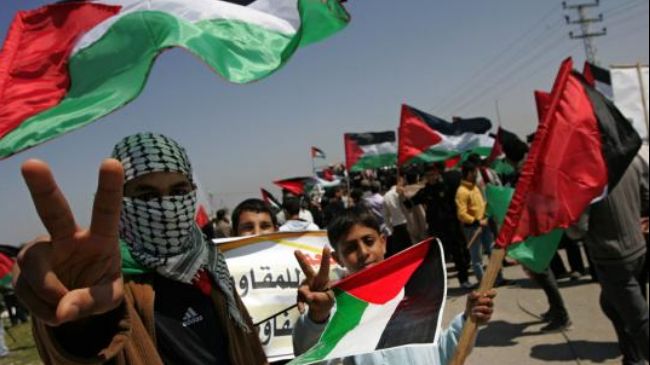Land Day 2013

Palestine Land Day 2013 was not substantively different from the first Land Day in 1976. That was the conclusion of the Arab Higher Monitoring Committee, the umbrella organization that unites most political parties and movements of the Palestinian Arab citizens in Israel’s occupied territories.
This year, the Arab Higher Monitoring Committee repeated its demand that Arab municipalities and communities expand their territorial jurisdiction, where Israeli planners have circumscribed all spatial development and forced Palestinian inhabitants into overcrowded conditions, transferring their lands instead for Jewish-only construction and development.
Addressing the 37th Land Day rally of some 20,000 participants in Sakhnin, the Committee, observed that the Israeli government continues to take more and more land from the Arab public, first in the Galilee and in the Triangle, and now aggressively in the Naqab.
Meanwhile, the main Land Day event in the south of Israel gathered 1,000 demonstrators in a march near the unrecognized Arab-Bedouin village al-Sayid. They were protesting the infamous Prawer Plan, the Israeli government scheme to evict, dispossess and displace tens of thousands of Naqab Bedouin from their villages. The government refuses to recognize these long-settled communities, effectively rendering them “outlaws” and subject to removal.
Showing unity at the event in Sakhnin, one of the Galilee communities where Israeli police killed six Palestinians on the first Land Day, was a delegation from the unrecognized Bedouin village al-Araqīb in the Naqab. That steadfast village has undergone demolition by Israel’s military and security forces and its Jewish National Fund 42 times between July 2010 and December 2012.
A journalist and an elderly woman walk away from tear gas smoke during clashes between Palestinians protesters and Israeli soldiers following a rally commemorating the 37th anniversary of `Land Day`, on March 30, 2013 near the Qalandia checkpoint in the Israeli occupied West Bank. (ABBAS MOMANI/AFP/Getty Images)
Palestinians also staged protests across the West Bank and Gaza Strip on Land Day 2013. Two Israeli soldiers were hurt in a stone-throwing clash, as they used tear gas to disperse the crowds. At the West Bank Qalandia checkpoint, nearly 200 Palestinians clashed with Israeli forces, who responded with tear gas.
Israeli troops patrolling the around the Gaza Strip fired live rounds at protesters who approached the border fence, but no injuries were reported. In the northern Gaza Strip, dozens of people rallied in Beit Lahiya, while at Khan Younis, to the south, others planted olive trees in commemoration.
A delegation of 20 Palestinians, including then-Prime Minister Salam Fayyad planted olive trees in the West Bank area known as E1, which Israel recently planned for colonization. Israeli police spokeswoman Luba Samri said that police dispersed that event and confiscated the saplings.
Land Day had an international dimension as well. Culminating the World Social Forum, in Tunis, Land Day was designated as “Palestine Day” and marked with a large demonstration and workshops to discuss and develop boycott, divestment and sanctions (BDS) campaigns. Across six cities in France, supermarket demonstrations called for an end to trade with Mehadrin and other Israeli agricultural export companies that participate in the appropriation of Palestinian land and sell illegal settler colony products. That followed Palestinian agricultural organizations’ recent appeal for actions to end international trade with Israeli agricultural companies complicit in the occupation. In England and Scotland, campaigners marked Land Day with an official complaint to the UK Charities Commission, urging it to remove the charity status currently enjoyed by the Jewish National Fund.
In the United States, Land Day coincided with Cesar Chavez Day. At their 19th annual conference on 30 March 2013, the largest association of Latin@ youth Movímíento Estudíantíl Chícan@ de Aztlán (M.E.Ch.A.), voted overwhelmingly to endorse the Palestinian call for BDS. In the Seattle area, the Palestine Solidarity Committee-Seattle, Code Pink and the Rachel Corrie Foundation for Peace & Justice also organized Land Day events to raise awareness about the boycott of the Ma’ale Adummim-based Sodastream corporation.
Iain EWOK Robinson, a Durban-based artist and member of the South African Artists against Apartheid collective, released a music video, “Freedom for us All,” as part of South Africa’s “BDS Day of Action,” which coincides with Land Day. That was the second Palestine-solidarity music video to come out of South Africa in March, following the release of the Mavrix single, “The New Black,” which received over 12,000 hits before Land Day.
Despite the sameness of the dispossession that sparked the first Land Day, as the local Arab Higher Monitoring Committee perceived, this year’s commemoration was contrastingly global.
A complete list of cities and actions are reported and published on the website of the BDS National Committee.
Note: Land Day commemorates the death of six Palestinian protesters—Khadija Shawahina, Rajaa Abu Riya and Khadhr Khalaila from Sakhnīn, Muhsan Taha from Kafr Kanna, Khair Yasin from Arrāba, and Rafat Zuhairi of ‘Ayn Shams (killed at Taybah)—by Israeli police during mass demonstrations in 1976 against the government decision to confiscate Arab-Palestinian land in the Galilee. The decision was accompanied by a curfew imposed on the villages of Sakhnīn, Arrāba, Dayr Hanna, Tur`ān and Kabūl, effective as of 17:00, 29 March 1976. Arab leaders had called for a day of general strike with protests to be held on March 30. The Israeli government declared all demonstrations illegal and threatened to sack any participating public employee, including schoolteachers who encouraged their students to join the demonstrations.
|